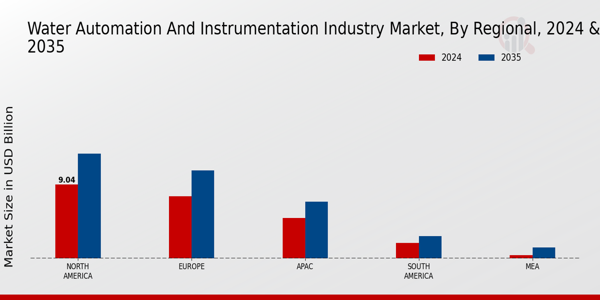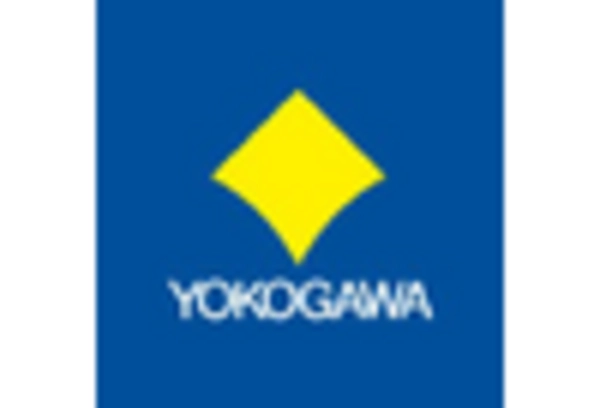Focus on Regulatory Compliance
The emphasis on regulatory compliance is increasingly influencing the Water Automation and Instrumentation Industry Market. Stricter regulations regarding water quality and usage are prompting organizations to adopt automated solutions that ensure adherence to these standards. Compliance with environmental regulations not only mitigates legal risks but also enhances public trust in water management practices. The market is witnessing a shift towards advanced monitoring and reporting systems that facilitate compliance with local and international standards. As regulatory frameworks evolve, the demand for sophisticated instrumentation capable of real-time monitoring and data reporting is expected to rise, thereby driving growth in the automation sector.
Rising Demand for Water Efficiency
The Water Automation and Instrumentation Industry Market is experiencing a notable increase in demand for water efficiency solutions. This trend is driven by the growing awareness of water scarcity and the need for sustainable water management practices. As industries and municipalities seek to optimize their water usage, the adoption of automated systems and advanced instrumentation becomes essential. Reports indicate that the market for water efficiency technologies is projected to grow at a compound annual growth rate of approximately 8% over the next five years. This growth is likely to be fueled by investments in smart water management systems that enhance monitoring and control capabilities, thereby reducing waste and improving resource allocation.
Increased Investment in Infrastructure
Investment in water infrastructure is a critical driver for the Water Automation and Instrumentation Industry Market. Governments and private entities are recognizing the necessity of upgrading aging water systems to ensure reliability and efficiency. This has led to substantial funding directed towards the modernization of water treatment plants, distribution networks, and monitoring systems. According to recent data, infrastructure spending in the water sector is projected to exceed USD 1 trillion over the next decade. Such investments are likely to create a robust demand for automation and instrumentation solutions, as stakeholders seek to implement state-of-the-art technologies that enhance operational efficiency and reduce maintenance costs.
Technological Advancements in Automation
Technological advancements are playing a pivotal role in shaping the Water Automation and Instrumentation Industry Market. Innovations such as the Internet of Things (IoT), artificial intelligence, and machine learning are being integrated into water management systems, enhancing their efficiency and effectiveness. These technologies enable real-time data collection and analysis, allowing for proactive decision-making and improved operational performance. The market is expected to witness a surge in the adoption of these advanced technologies, with estimates suggesting that the IoT-enabled water management market could reach USD 20 billion by 2026. This shift towards automation not only streamlines operations but also contributes to better compliance with environmental regulations.
Growing Awareness of Environmental Sustainability
The growing awareness of environmental sustainability is a significant driver for the Water Automation and Instrumentation Industry Market. Stakeholders across various sectors are increasingly prioritizing sustainable practices to minimize their ecological footprint. This shift is leading to the adoption of automated water management systems that optimize resource use and reduce waste. The market is likely to benefit from initiatives aimed at promoting sustainable water practices, with projections indicating that investments in sustainable water technologies could reach USD 15 billion by 2025. As organizations strive to meet sustainability goals, the demand for innovative automation and instrumentation solutions is expected to rise, fostering a more sustainable approach to water management.

















Leave a Comment